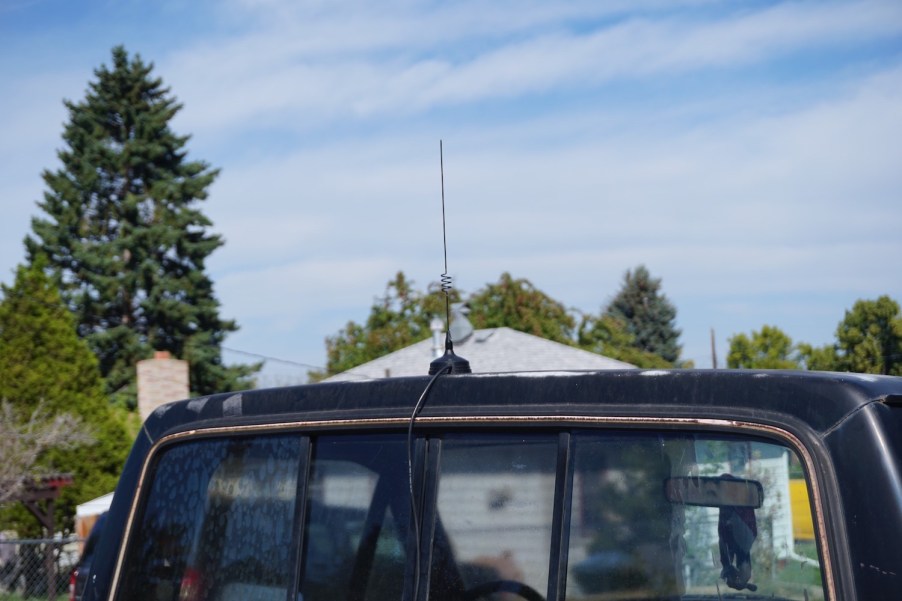
Why Do Some Cars and Trucks Have Such a Tall Antenna on Their Roof?
So you were driving down the highway the other day and noticed a car or truck with a huge antenna on its roof. You thought They must really love to listen to tunes on the radio! But then you wondered if there was another purpose to this extra-long antenna. The truth is you were probably looking at a Citizens’ Band (CB) radio “whip” style antenna. There are a couple of possible explanations as to why you saw a vehicle outfitted with an aftermarket radio.
What is the purpose of a CB radio whip antenna?
A radio “whip” is a long flexible antenna that improves signal. They are often fitted to cars or trucks so they won’t break if you drive under a low bridge or branch. They are popular among enthusiasts who have aftermarket radios they use to communicate with one another.

A short “whip” radio antenna may be made of flexible metal. It may also have a spring for a base to make it extra flexible. For structure, longer “whip” radio antennas are made of fiberglass and have a wire center that acts as the actual antenna. This second type can be up to 35 feet long! You may see these longest ones on military trucks attached to one bumper, bent over the vehicle, and tied down to the other bumper.
What would someone need such a long antenna for? They certainly could be using it to improve the reception of their regular old FM or AM stereo system. But they are more common for communication radios–often called CB radios. Newer whip antennas can increase cellphone signal for a car phone or a cell signal booster.
Can you have a CB radio in your car?
“CB radio” is a common acronym for a “citizens’ band” radio. You can think of it as a powerful walkie-talkie that can broadcast and receive on the multiple frequencies or bands that citizens are allowed to use. You can install them in your car or house and use them whenever you like.

Unlike the radios installed in police cars, fire trucks, or military vehicles, CB radios are limited to radio-wave bandwidths the government does not regulate. They are popular among off-roaders or radio enthusiasts in general. You can buy a handheld CB radio that looks like a big walkie-talkie. You can also buy a larger CB radio base station for your home or a portable one you can mount in a car or truck.
One group that historically used CB radios were semi-truck drivers. CB radio channels 19 and 20 were once alive with chatter amongst long-haul drivers, much of it in a series of codes they all had memorized. But today, you may spend hours listening to these channels without hearing from a single truck driver.
Why don’t truckers use CB radios anymore?
Most semi-trucks still have a CB radio, and a truck driver can use it to communicate with local emergency services. But banter among semi-truck drivers has mostly moved to various cell phone apps.
Like Uber drivers, many semi-truck drivers are fans of the Waze navigation app. They use it to warn one another of police speed traps, upcoming construction, or accidents. In years past, you had to be listening to a CB radio to get this information. But today, you only need to check Waze.
In addition, bored truck drivers can look further than nearby trucks for conversation. I’ve heard that many semi-truck drivers turn on their cellphones and start conference calls with truck drivers they know well when they get bored–even if their friends are on the other side of the country.
Next, find out whether the spikes on semi-truck wheels are actually legal, or learn how to install your own CB radio in the video below:



